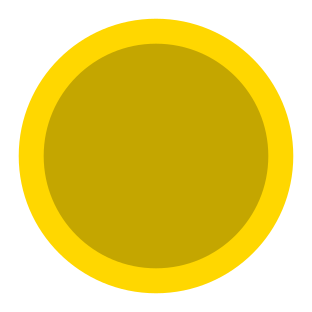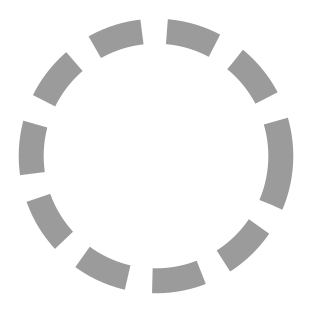We’ve tried writing letters on the marbles to represent data. This fails because roons can’t distinguish between the letters.
Here’s a new strategy. We’re going to write letters on our marbles that roons can handle:
We’ve written a 1 on each marble. As long as we write the same thing on each marble, roons doesn’t need to “read” what’s written there — it can treat them all the same.
So we have a way of representing 1, but that’s not enough. To store information, we need a way to represent at least one other value.
But how can we represent a second value? All our marbles are already 1, so we can’t write anything else on them.
Imagine we label each cell with a 0:
Now:
- Wherever there’s a marble
 we see a 1
we see a 1 - Wherever there’s a hole
 , we see a 0.
, we see a 0.
The surface of a disk is a pattern of holes and marbles. As our pattern advances:
- Marbles move, carrying 1s with them
- Holes move, carrying 0s with them.
reading data
This scheme allows us to read data directly off the disk.
If you see an area of holes and marbles that looks like 




 , you can read that as 010011.
, you can read that as 010011.
We’ve found a shared language, legible to both roons and humans. roons can manipulate  and
and  just fine, which means it can manipulate 1 and 0 — the first step towards letting it transform data.
just fine, which means it can manipulate 1 and 0 — the first step towards letting it transform data.
We’ll return to this language later, extending it so we can represent more meaningful data. For now, let’s look at how we can use roons to manipulate these individual 1s and 0s.
continue
